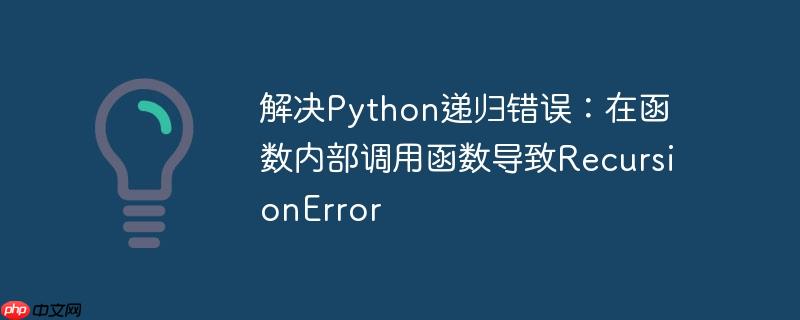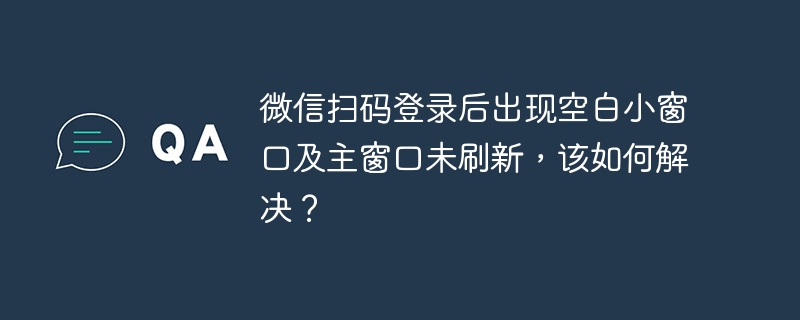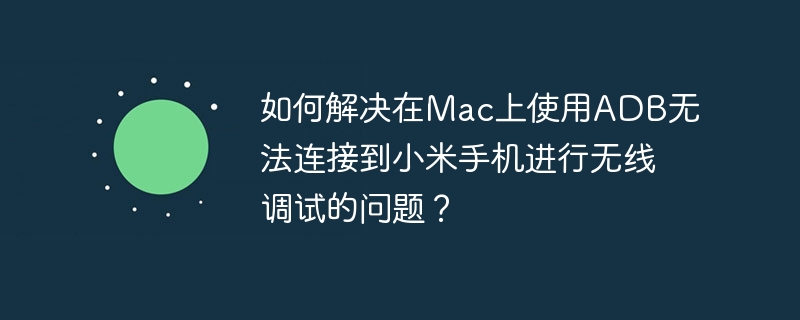
正如摘要所说,本文旨在解决在python中由于函数内部不当调用导致RecursionError的问题。我们将通过分析错误原因、提供修改后的代码示例,并详细解释如何避免此类错误,确保代码的正确性和可维护性。重点在于理解递归调用的概念,以及如何正确地传递参数以防止无限递归。
在python编程中,RecursionError通常发生在函数调用自身,且没有明确的终止条件时。这种无限递归会导致程序超出最大递归深度限制,从而引发该错误。 让我们分析一下原始代码中出现问题的原因,并提供解决方案。
问题分析
原始代码的问题在于sum_all函数内部定义了vat, service, 和 sum_all_invoice函数,并且sum_all_invoice 函数又调用了sum_all函数,导致了无限递归。每次调用sum_all,它都会重新定义这些内部函数,并且再次调用sum_all,从而形成一个无限循环。
立即学习“Python免费学习笔记(深入)”;
解决方案
为了解决这个问题,需要将vat、service和 sum_all_invoice 函数移到sum_all函数外部,使它们成为独立的函数。 此外,需要将 sum_all 计算得到的 total 值传递给 sum_all_invoice 函数,以便它可以使用该值进行后续计算。
以下是修改后的代码:
def sum_all(): total = 0 # Iterating through the labels of each meal using a loop for i in range(1, 7): label_name = f"meal_{i}_line" # Accessing the values directly by reaching the labels label = getattr(self.ui, label_name, None) label_text = label.text() try: # Adding the number inside the label to the total variable total += int(label_text) except ValueError: # If the value inside the label is not a numerical expression, an error is displayed. # You can handle the error situation here. print(f"Error: No numerical expression found inside the {label_name} label. Defaulting to 0.") total += 0 self.ui.price_line.setText(str(total)) # print to the price vat_value_to_write = vat(total) self.ui.vat_line.setText(str(vat_value_to_write)) # print to the VAT line service_charge_to_write = service(total) self.ui.service_charge_line.setText(str(service_charge_to_write)) # print to the service charge line sausage = sum_all_invoice(total) self.ui.subtotal_line.setText(str(sausage)) # VAT calculation def vat(total): vat_value = total * 0.18 return vat_value # Service charge calculation def service(total): service_charge = total * 0.1 return service_charge # Calculate all def sum_all_invoice(total): vat_value = vat(total) service_value = service(total) total1 = vat_value + service_value + total return total1 # Call the sum_all function when the button is clicked self.ui.total_button.clicked.connect(sum_all)
代码解释
- 函数独立化: vat, service 和 sum_all_invoice 函数被移到 sum_all 函数外部,成为独立的函数。这使得它们可以被独立测试和重用。
- 参数传递: sum_all 函数计算得到的 total 值被作为参数传递给 sum_all_invoice 函数。这样,sum_all_invoice 函数就可以使用 total 值进行后续的 VAT 和 service charge 计算。
- 避免递归: sum_all_invoice 函数不再调用 sum_all 函数,从而避免了无限递归的发生。sum_all函数调用sum_all_invoice函数,实现了正确的数据流向。
最佳实践和注意事项
- 避免函数内部定义函数 (除非必要): 在大多数情况下,将函数定义在函数内部会降低代码的可读性和可维护性。尽量将函数定义在模块的顶层,使其成为独立的函数。
- 明确递归终止条件: 如果确实需要使用递归,请确保定义明确的递归终止条件,以避免无限递归。
- 参数传递: 在函数调用之间传递必要的数据,以确保函数可以正确地执行其任务。
- 代码组织: 良好的代码组织结构可以提高代码的可读性和可维护性。尽量将代码分解成小的、独立的函数,并使用有意义的函数名和变量名。
- 测试: 对每个函数进行单元测试,确保其功能正常。
总结
通过将内部函数移动到外部,并正确传递参数,可以有效地解决RecursionError问题。 遵循最佳实践,可以编写出更健壮、可维护的Python代码。 记住,清晰的代码结构和明确的函数职责是避免此类问题的关键。


















